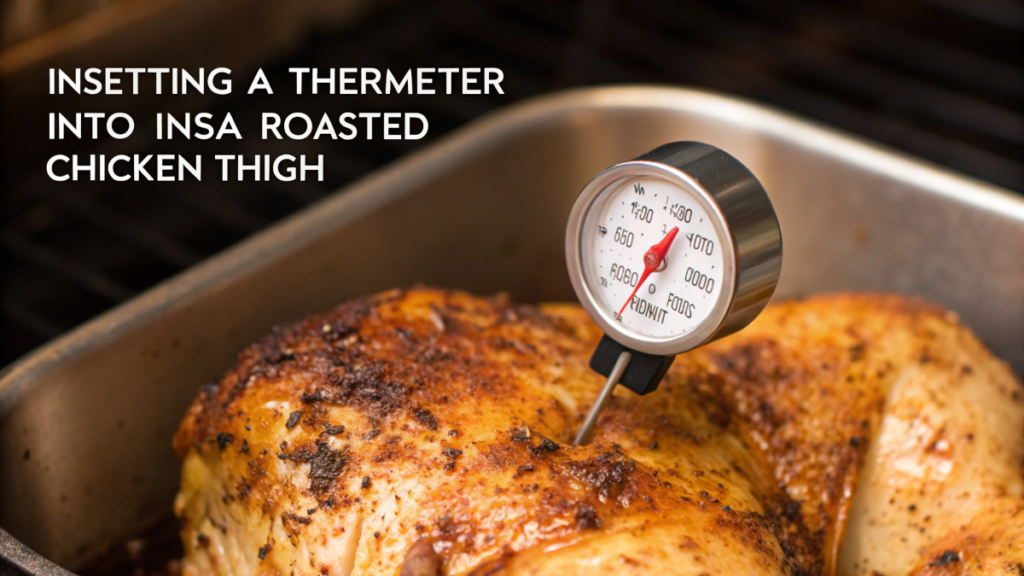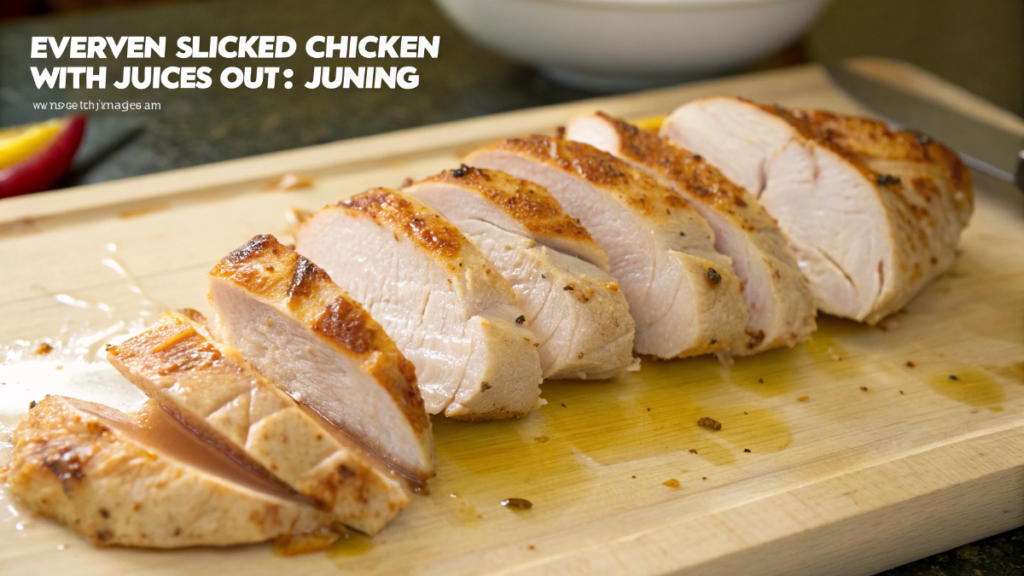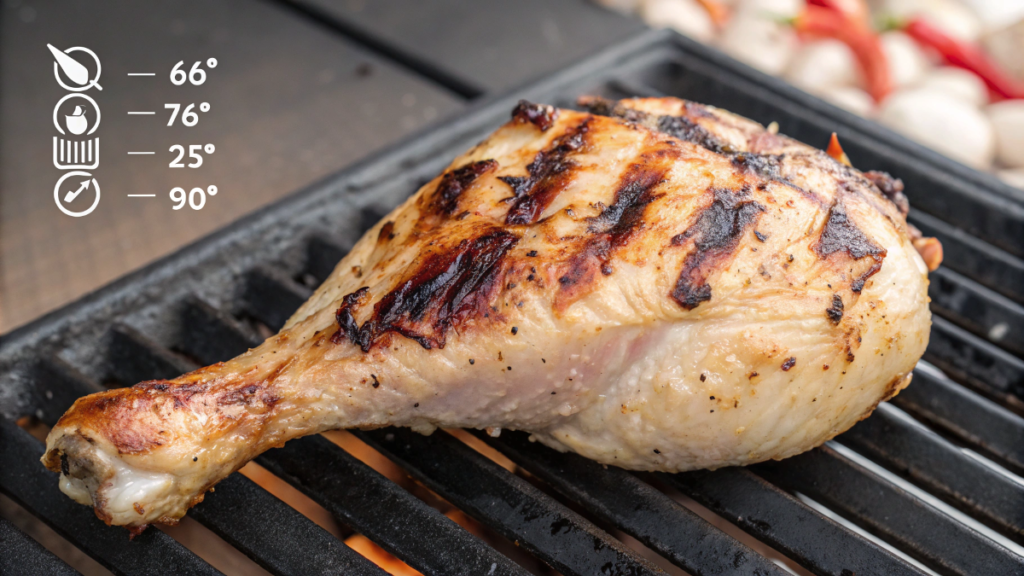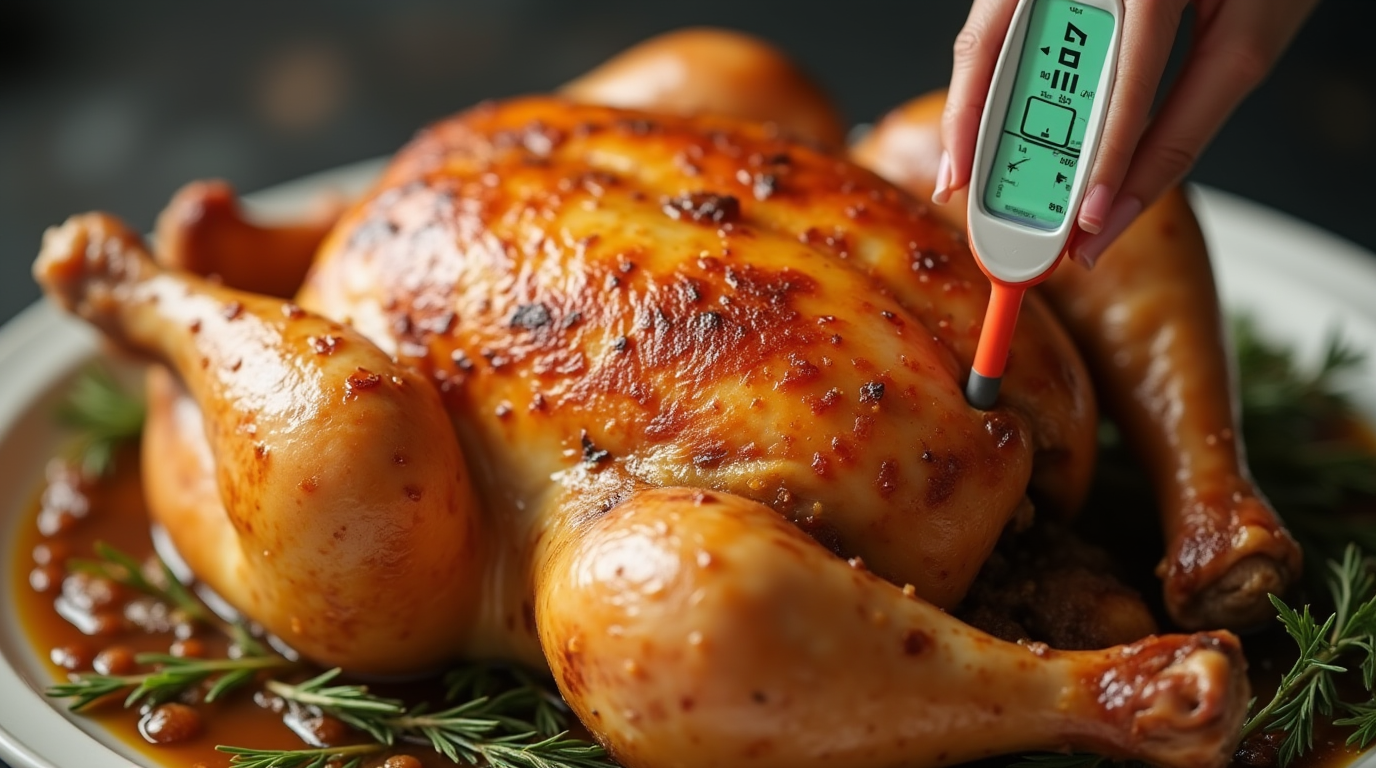Table of Contents
Introduction
Have you ever wondered why your chicken sometimes turns out dry and flavorless, even though you followed a recipe? Or maybe you’ve been unsure whether it’s fully cooked and safe to eat. The secret lies in knowing exactly when the temperature is chicken done. Experts use these methods to ensure safety and juiciness every time. Let’s dive in 🍗!
Why Monitoring the Temperature Is Chicken Done Matters?
This quick list focuses on one critical aspect of cooking chicken: ensuring it reaches the right internal temperature. Why is this so important? Chicken that isn’t cooked to the proper temperature can harbor harmful bacteria, while overcooked chicken can ruin your meal. This guide is beginner-friendly, takes less than 15 minutes to learn, and requires no advanced skills—just a little attention to detail. By the end, you’ll know exactly how to tell when the temperature is chicken done and how to apply it to any recipe.
Essential Ingredients
Before we dive into the methods, let’s talk about what you’ll need to get started:
- Chicken: Any cut works—breasts, thighs, drumsticks, or a whole bird.
- Meat Thermometer: This is non-negotiable. A reliable thermometer ensures accuracy.
- Oven or Stovetop: You can use either method to cook your chicken.
- Patience: Cooking chicken perfectly requires focus—not rushing!
Pro Tip: If you don’t have a meat thermometer yet, invest in one. It’s worth every penny for food safety and flavor .
Step-by-Step Instructions
1️⃣ How to Confirm the Temperature Is Chicken Done Using a Thermometer
The most reliable way to check if the temperature is chicken done is by using a meat thermometer. Here’s how:
- Insert the thermometer into the thickest part of the chicken, avoiding bones.
- Look for an internal temperature of 165°F (74°C). This is the FDA-recommended safe temperature .
- Remove the chicken from heat once it reaches this temperature—it will continue cooking slightly as it rests.

2️⃣ Check for Juices Running Clear
While not foolproof, checking the juices can give you a clue:
- Cut into the thickest part of the chicken with a knife.
- If the juices run clear rather than pink, the chicken is likely done.
- Combine this method with a thermometer for extra assurance.

3️⃣ Test Texture and Firmness
Feel the chicken with tongs or your fingers (carefully!) to gauge doneness:
- Raw chicken feels squishy, while cooked chicken has some firmness.
- Practice makes perfect here—try comparing textures between raw and cooked pieces until you get the hang of it.
4️⃣ Observe Visual Cues
Color changes are another indicator:
- Cooked chicken turns opaque and white instead of pink.
- For grilled chicken, look for grill marks and even browning.

Safe Internal Temperatures Table
| Chicken Type | Safe Temperature (°F) | Notes |
|---|---|---|
| Boneless Breast | 165°F | Cooks faster; watch closely |
| Thighs/Dark Meat | 165°F | Juicier; slightly forgiving |
| Whole Chicken | 165°F | Check thickest part of breast |
This table provides a quick reference for the recommended internal temperatures for different types of chicken. Keep it handy while cooking to ensure safety and perfect results every time!
Assembly
Now that you’ve checked the temperature is chicken done, let’s assemble your dish!
- Slice the chicken evenly for serving.
- Pair it with sides like roasted vegetables, mashed potatoes, or a fresh salad.
- Garnish with herbs like parsley or cilantro for a pop of color.
Presentation Tip: Arrange sliced chicken neatly on a platter with complementary colors for an Instagram-worthy spread 📸.
Storage and Make-Ahead Tips
Cooked chicken stores well if handled properly:
- Let the chicken cool before refrigerating to prevent condensation.
- Store in an airtight container for up to 3-4 days.
- Reheat gently in the microwave or oven to retain moisture.
Pro Tip: Freeze pre-cooked chicken portions for future meals. Label them with the date for easy tracking.
Recipe Variations
Why stick to plain chicken when you can spice things up?
- Marinate chicken in yogurt, lemon juice, and spices for a flavorful twist.
- Try different cooking methods like grilling, baking, or air-frying.
- Experiment with seasonings like garlic powder, paprika, or cayenne pepper for added kick 🔥.
Conclusion
Knowing when the temperature is chicken done is a game-changer for anyone who loves cooking. With these four easy methods, you’ll never serve undercooked or overcooked chicken again. So grab your thermometer, fire up the stove, and start experimenting with flavors and techniques. Happy cooking! 🍴
FAQs
Q: What happens if chicken isn’t cooked to 165°F?
A: Undercooked chicken can contain harmful bacteria like salmonella, which can cause foodborne illnesses . Always aim for 165°F for safety.
Q: Can I rely on visual cues alone?
A: Always check the temperature is chicken done using a thermometer for accuracy.
Q: How long does it take to cook chicken to 165°F?
A: Cooking times vary depending on the method and size of the chicken. Generally, boneless breasts take 20-25 minutes in the oven at 375°F .
Q: Are there health benefits to eating properly cooked chicken?
A: Absolutely! Chicken is packed with lean protein, vitamins, and minerals. Proper cooking ensures you reap these benefits without risking illness .

